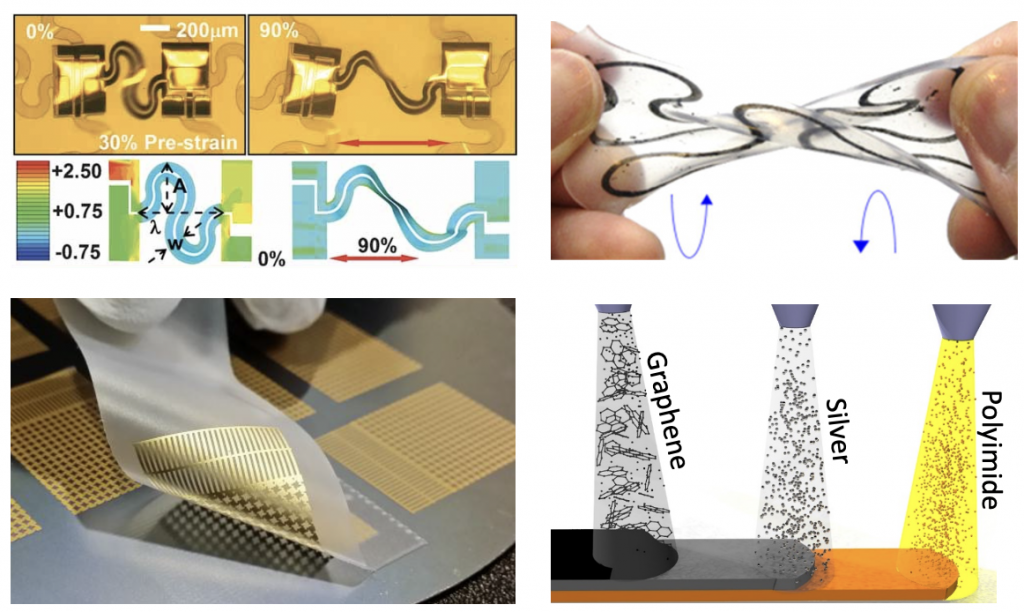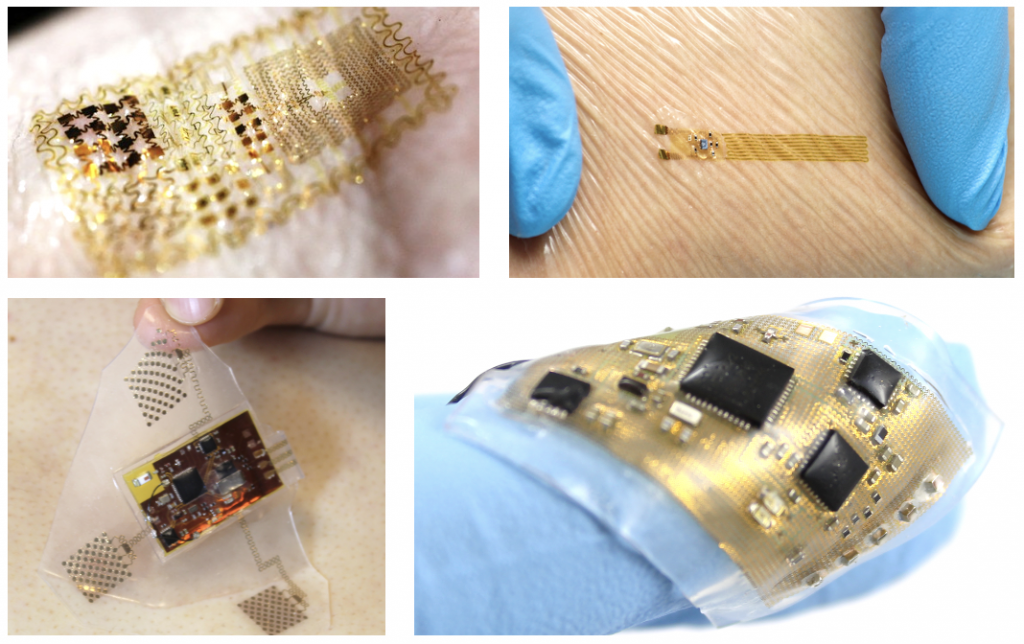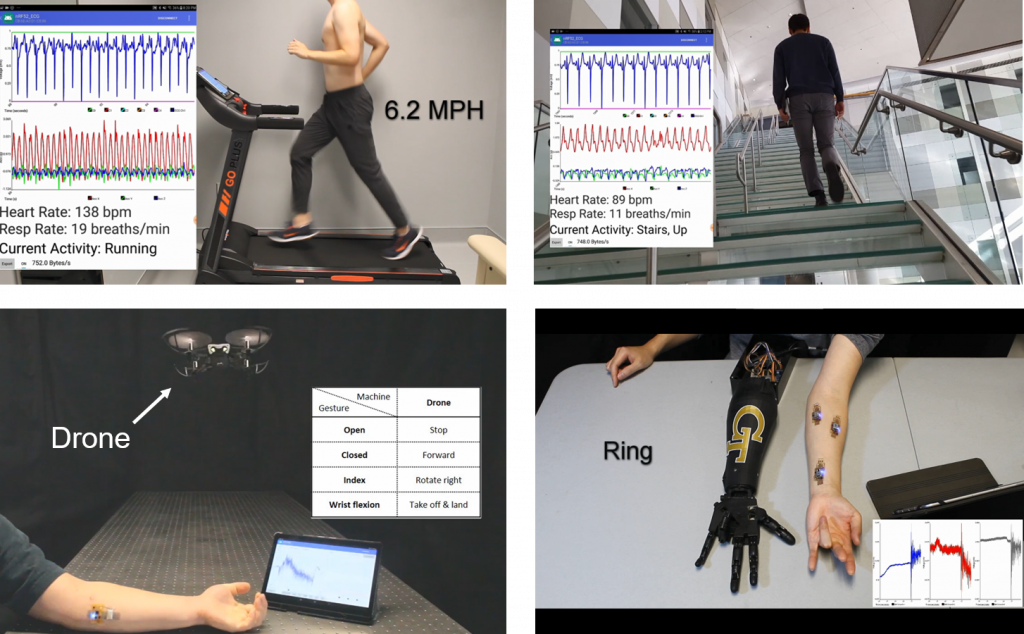Mechanics, Materials & Manufacturing

Strategic integration of stretchable thin-film interconnection and soft materials, whose electrical and mechanical properties are tuned per application, grants a low-profile electronic system fully contained and functional for a comfortable and versatile skin integration. Dr. Kim and his colleagues showed the feasibility to replace the MEMS-based manufacturing process with an additive approach by various nano ink materials and an aerosol jet printer. Combining the novel method to release-and-transfer a large-area, stretchable electronic film, aerosol jet printing is beginning to shape the next era of the manufacturing of low-cost electronics.
Intimate Integration with Physiology

Human skin not only serves as the protective barrier for our internal organs but also provides numerous physiological information often manifested as time-varying electrical pulses. While employing these pulses (and other signals) to understand human health and disease diagnosis is nothing new (e.g., electrophysiology), the physical bulk of conventional tools needed to conduct electrophysiology critically limits where and when such recordings could take place. Extremely thin, low-profile, and stretchable electronic sensors that resemble a temporary tattoo, a clear bandage, or a sticky tag, enable comfortable and safe integration with human skin for high-fidelity human health and behavior monitoring.
Smart Diagnostics, Therapies, and Human-Machine Interfaces

The stretchable electronic sensors contain miniaturized integrated circuit components for long-range wireless communication, signal processing, and power management. The patch-like form factor allows the electronic sensors to be attached to areas beyond conventional acquisition sites as well as the ability to deploy multiple devices to capture a novel set of physiological data. Leveraging both machine learning algorithms and the abundance of personalized data, the stretchable electronic sensors serve as the perfect platform for disease diagnosis, human-machine interfaces, and long-term health monitoring, all without disrupting the user’s life style.
